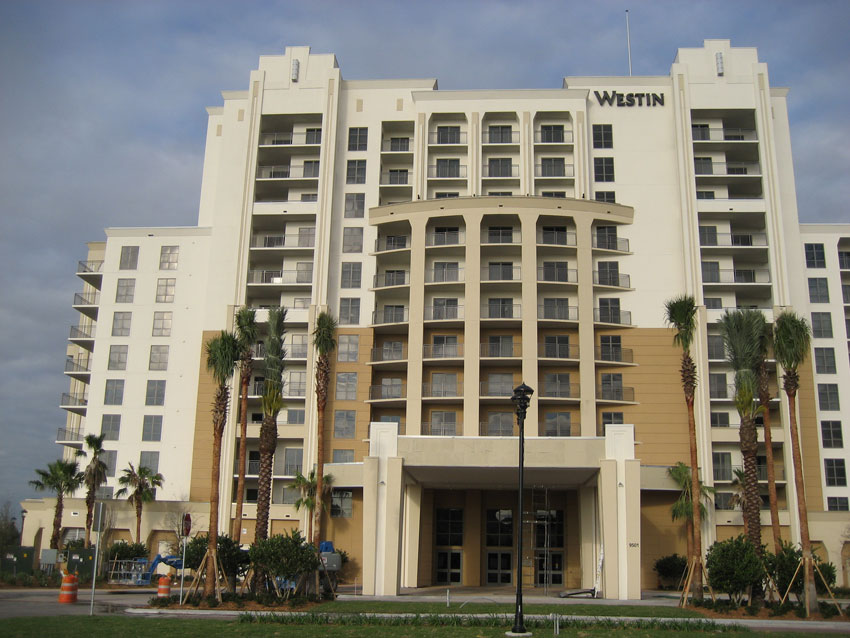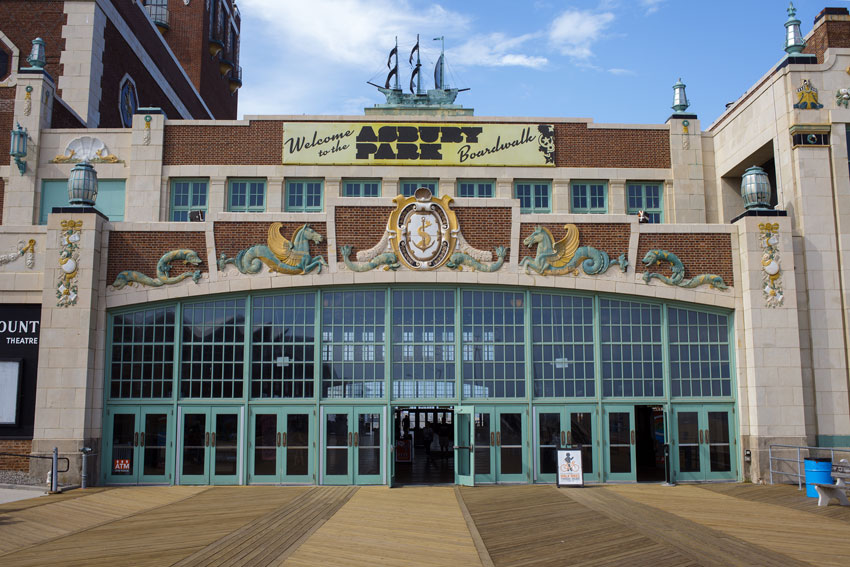Shelter from the Storm
The Components of a Hurricane-Resistant Window
To withstand the rigors of testing and secure a hurricane-resistant rating, hurricane-resistant windows require special glazing and extra attention to both frame and assembly. The type of glass used in hurricane-resistant windows is called laminate glazing. Laminated glass, sometimes also referred to as “safety glass,” consists of two or more panes of glass with one or more layers of polyvinyl butyl (PVB), urethane, or resin sandwiched between them and treated. The glass panes can be basic float glass, tempered glass, or heat-strengthened panels. The number of layers of each sheet of glass and the thickness of each, and the laminate interlayer, can be varied in order to achieve the required performance. Laminated glass provides durability, high-performance, and multifunctional benefits while at the same time preserving the aesthetic appearance of glass. Besides its requirement in hurricane-resistant products, laminate glazing is also found in designs for earthquake and ballistic and blasts zones.
Laminate glazing is specified for hurricane-resistant windows because of the unique properties of the glass and interlayer blend. Ordinary glass windows are brittle and, when broken, tend to break into long sharp pieces, which can cause serious and sometimes fatal injuries. In laminate glass, the interlayers have the capacity to absorb the energy of impact and resist penetration. Safety hazards caused due to breakages are minimized with the use of laminated glass. In the event that the glass is broken, fragments tend to adhere to the PVB interlayer, mitigating the risk of injury from falling glass and helping to resist further impact or weather damage. A PVB membrane or other interlayer adds good tenacity performance so that if the laminated glass breaks due to violent force, the PVB will absorb a large amount of impact energy and disperse it rapidly. Therefore, it is hard to break the laminate glass and the shape of the glass may be maintained, even if broken. Any glass fragments will adhere to the plastic interlayer, minimizing the risk of injury and property damage.
Sealed insulating laminated impact glass is also available to provide improved thermal efficiencies. Laminated glass reduces the amount of sound that is transmitted, earning a higher sound transmission class (STC) rating than traditional glazing and creating a quieter, more comfortable interior environment.
Depending on how it is manufactured, laminate glazing can also be more energy efficient. Laminated glass also filters out more than 99 percent of the sun’s harmful ultraviolet rays, helping to reduce fading of interior materials.
Compliance with enhanced energy codes is driving a new trend in laminate glazing. Traditionally, laminated glass is placed to the outside of a glazing unit, in the outboard position. This makes insulative low-e coatings prohibitively expensive or even unsourceable. Today’s design trend has certain suppliers offering laminate glazing in the inboard position, with a traditional piece of glass outboard. This position allows the outboard lite great flexibility, as the traditional glass can receive colored glass, energy coatings, and simulated divided lites, without affecting the integrity of the laminate glazing inboard.
Laminate glazing is only part of the hurricane-resistant window story. Anchorage and frame assembly are just as vital. When hurricane-resistant systems are tested, it is an evaluation of the entire system. It takes an entire window system to make an impact-resistant opening. While the earliest hurricane-resistant products were often limited to fixed, monolithic rectangles, which severely limited aesthetics, advances in technology have engineered a full range of frames and sashes that can duplicate the looks of traditional products and even replicate historic facades.
Frames for impact-resistant windows or doors may be constructed from wood, metal, vinyl, or any combination thereof. However, frames are generally heavier than those made for regular residential windows. Wind force experienced during a hurricane can be strong enough to cause an entire window frame to give way from its anchorage in the envelope. Certain manufacturers add stiffeners and reinforcements, like steel, to help support storm impacts, along with high-performance anchorage systems to provide a complete hurricane-resistant window system.
To ensure a window is hurricane resistant and has successfully passed ASTM procedures and other testing standards, it is important to look for a manufacturer who is a member of and certifies their product to the American Architectural Manufacturers Association, or AAMA. AAMA membership and certification helps to ensure quality performance and consistency in manufacturing.
Specifying Hurricane-Resistant Windows in the Field
When specifying hurricane-resistant windows and doors, there are several general guidelines:
- Consult local and regional code.
- Determine design pressures required.
- Decide what window type is desired or required.
- Establish whether the products selected have been tested or undergone engineering analysis.
- Decide what mulling options are, if required.
- Determine what anchorage is required to meet design pressures and code.
- Verify that possible manufacturers participate in a third party certification program like AAMA.
Hurricane codes and requirements can be confusing in and of themselves. Add to that specific local mandates, such as those in Texas and Florida, and the picture only gets murkier. In Florida, two different hurricane testing procedures are recognized: ASTM and TAS. While close, these testing procedures are not the same. A common misperception is that the entire state requires unique TAS testing, yet only Miami Dade and Broward county projects involve TAS impact and cycling protocols. A familiarity with requirements specific to the project will allow confidence when selecting manufacturers with certified products.

Photo courtesy of Graham Architectural Products
Project: Westin Hotel, Village of Imagine, Orlando, Florida
While specifying windows in hurricane zones involves extra steps, understanding regional requirements and product certifications means selecting and building with confidence. Westin Hotel, Village of Imagine, Orlando, Florida
Clarity early on about project goals, design, and codes is a key to success for both the project and the budget. Manufacturers must choose a test size window to demonstrate a product’s hurricane resistance. If changes are later made that would alter the size of the window to a larger unit or the window’s operation, that product may no longer meet testing or may require additional testing, which is expensive. Providing a window and wall chart allows a window manufacturer to determine what it can and can’t supply. Making sure risk category, exposure category, and wind speeds are clearly defined also ensures testing is performed correctly the first time. Verifying if any unique attachments are required based on code and manufacturer is also vital. While some manufacturers have impact products certified with standard attachment methods, helping architects detail and draw products, those units that may rely on a different system integration method need to be called out.
Specifying correctly means defending the integrity of a building and the lives of its occupants. By keeping in mind several key points: that the window system is tested, not just the glass; that there can be no substitution of components; that large or small missile tests must be conducted depending on elevation; and that there are many different possible glass interlayers; and carefully examining the test report for maximum size, a project can proceed into a storm with confidence.










